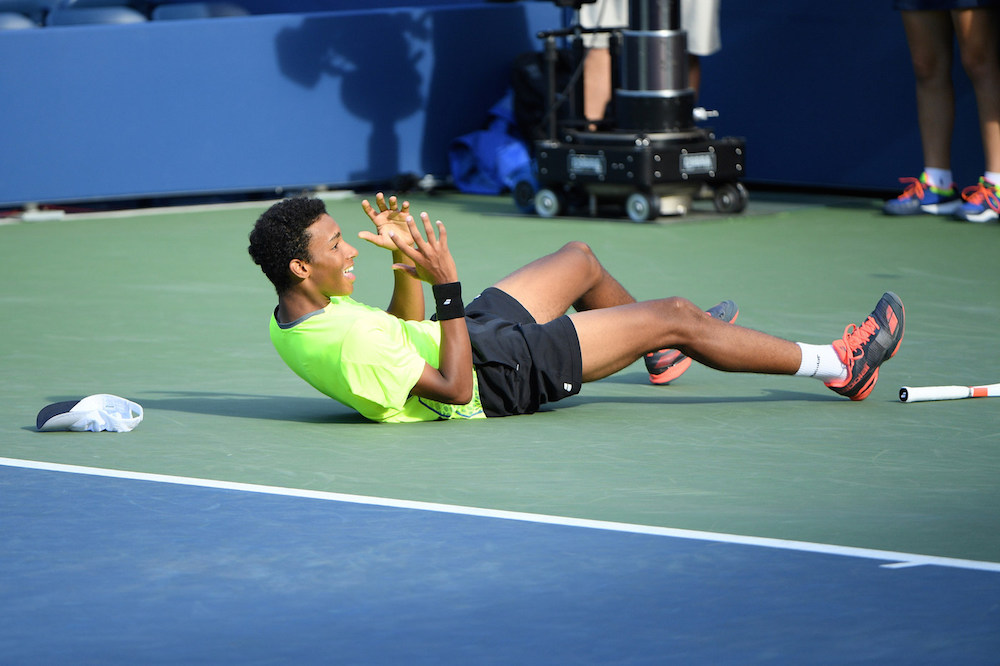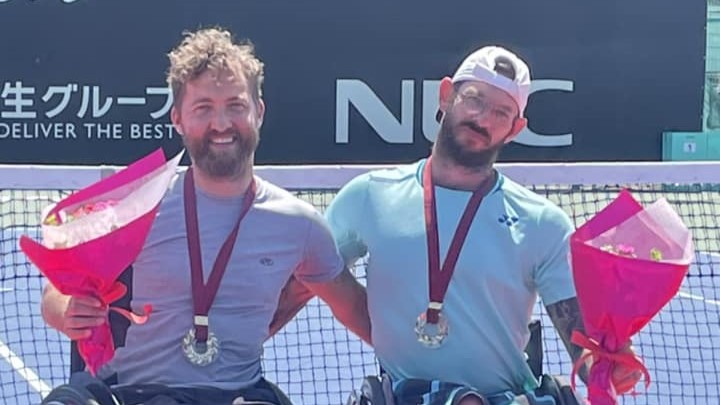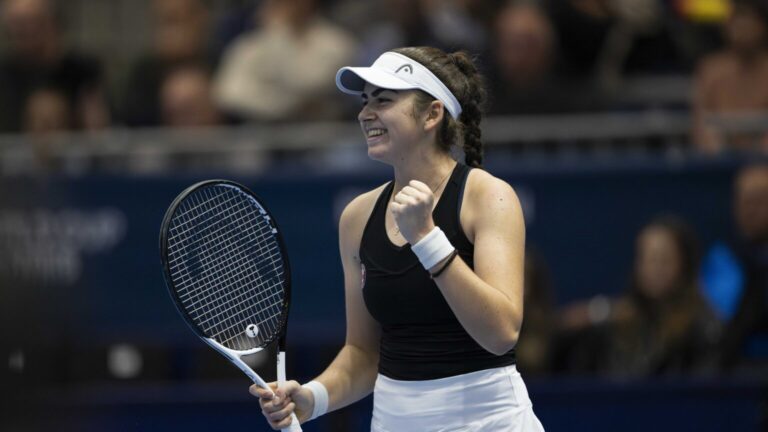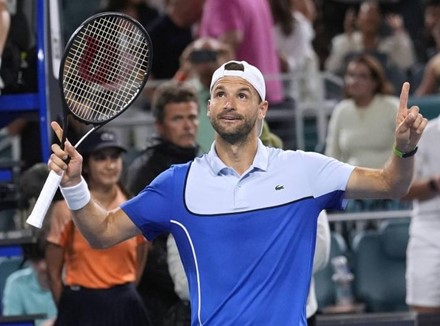
It’s an open secret that Tennis Canada officials have been trying to ‘shelter’ the prodigal Félix Auger-Aliassime over the past few years. His exceptional talent was recognized early but it was wisely determined that excessive hype should be avoided.
In that sense, the fact that he lost the 2016 French Open junior boys final – while still 15 years old – was probably a blessing. In the same vein, it may not have been a bad thing when he was overshadowed five weeks later when his good friend and compatriot Denis Shapovalov, 17, won the junior boys event at Wimbledon.

But with his convincing run to the US Open junior boys title on Sunday, capped by a 58-minute, 6-3, 6-0 win over fifth-seeded Miomir Kecmanovic of Serbia in the final, it’s obvious the nearly 6-foot-3 Montrealer is now anything but an unknown commodity in the tennis world.
In hindsight, the 1-6, 6-3, 8-6 loss to unseeded Geoffrey Blancanaux in the French Open final, after holding three match points, may have been a necessary setback for Auger-Aliassime – a learning experience about how things don’t always come easy in tennis.
“Obviously it was really heart-breaking and I kind of had some nightmares about it,” Auger-Aliassime said on Sunday about the Roland Garros final in June, “but going through here (US Open) I was really motivated and I didn’t want to get that feeling again. So I was ready to do anything to win this final.”
Auger-Aliassime was the class of the field – partially aided by the absence of Shapovalov who is now concentrating on men’s tour events – and his fellow players could feel it as he gradually mowed his way through all the opposition.
Seeded No. 6, he grew more confident with each match. “As the rounds went on,” he said, “I felt that there wasn’t much that could ‘de-stabilize’ me, no matter what the quality of the opposition was, the weather conditions and even my own fitness. I was there on every point. I think my opponents could feel very early in the matches what kind of mindset I was in and maybe that intimidated them a bit.”
The victory on Sunday capped a momentous year at the Grand Slam junior events for Auger-Aliassime. “They were four completely different tournaments,” he said looking back. “In Australia (seeded No. 4), I wasn’t playing my best tennis. Maybe I was a little too nervous – it’s the first Grand Slam of the year and I wanted to do well because I’d done well the year before. But I got there and was a little nervous which I didn’t expect. It wasn’t a good tournament for me. (He lost 6-3, 6-1 to No. 15 seed, the left-handed, top-spinning Kenneth Raisma from Estonia.)
“At Roland Garros (seeded No. 11) I played well in all my matches and got to within a point of winning the tournament, which was tough.
“I think I improved with every Grand Slam.
“And it was a nice experience at Wimbledon to play on grass for the first time. (Seeded No. 3, he was beaten 5-7, 7-6(5), 6-2 by No. 7 Alex De Minaur of Australia in the quarter-finals.)
“Then I got to the US Open (seeded No. 6) confident and knowing that if I played my best level I was capable of winning the title.”
Like the No. 236-ranked Shapovalov, who’s a candidate to play singles for Canada in its Davis Cup tie vs. Chile this weekend in Halifax, Auger-Aliassime is faced with a decision about continuing to play some junior events or concentrating on Futures and Challenger tournaments in the pros.
“It might, because I have already had some good wins at the pro level,” he said about whether it’s time to leave junior events behind. “I know I can compete with these guys.
“And now being able to win a Slam, and to make a final on two different surfaces, I think it might be time to go to the next level. But you never know what’s gonna happen next year. If I want to go back and play the junior Grand Slams, I will.”
In his last two events at the pro level in July and August – National Bank Challenger tournaments in Granby and Gatineau, Que. – he lost in the first round in Granby 4-6, 6-4, 6-3 to No. 276-ranked Sekou Bangoura of the U.S. before winning a qualifying round in Gatineau and then bowing out 6-2, 6-4 to No. 209-ranked Peter Polansky.

Before those two events, given a wild card into the qualifying at Rogers Cup in Toronto (above), he lost 7-5, 7-6(3) to No. 184-ranked James Duckworth of Australia.
Except for the Polansky match when he looked a little jaded by all the tennis he had played, he showed he was able to compete with Futures and Challenger level players. Watching those matches, it was obvious that he has the strength and power needed to succeed. He just lacked composure at key moments in the matches.
That’s all part of an ongoing maturation and it’s conceivable his latest achievement – winning the US Open juniors – will provide just the boost he needs to have greater success at the next level.
For the immediate future, he’s headed off to Budapest on Wednesday where he will try to help Canada defend its 2015 Junior Davis Cup title. Unfortunately, because they don’t qualify any longer as 16-and-under players, he will be without Shapovalov and Benjamin Sigouin, his teammates on last year’s championship-winning team.
A year ago Shapovalov and Auger-Aliassime won the US Open junior boys doubles title but Auger-Alissime and Sigouin fell just short this year – losing Saturday’s final 6-3, 7-6(4) to Juan Carlos Manuel Aguilar (who lives in Montreal) of Bolivia and Fernando Meligeni Rodrigues Alves of Brazil.

In the girls singles at the US Open, 16-year-old Bianca Andreescu of Mississauga, Ont., reached the semifinals where she was beaten 5-7, 6-1, 6-2 by eventual champion Kayla Day, 16, of the U.S.
Bothered by leg and arm issues at various times during the event, Andreescu battled hard. She was particularly impressive in winning a third-round match over Usue Maitane Arconada of the U.S. In that one, Andreescu rallied from a set and 2-5 down to beat the 17-year-old Argentine-born American 5-7, 7-5, 6-3.
Andreescu’s injuries forced her to withdraw in the doubles quarter-finals alongside British partner Katie Swan.
Trengrove was a dinkum Aussie

The well-respected Australian writer and tennis journalist Alan Trengove died last week in Melbourne at the age of 87.
Full disclosure here, Trengove was a friend of more than 40 years and one of the finest writers and people I have met in my more than four decades in the tennis business.
He lived an eventful live with his wife Joan and family – including an assignment to London as correspondent for Australia’s Sun News-Pictorial newspaper from 1961 to 1965. It involved a six-week passenger liner (all expenses paid) return trip from Australia to England that included going through the Panama Canal and a stop in Vancouver. On the first-class voyage were his wife Joan and their children Chris, Deborah and Kim.
Trengove founded the Australian Tennis Magazine in 1976 and it exists to this day, and also wrote the definitive book about Davis Cup – “The History of the Davis Cup” – as well as 15 others including one on Australian Prime Minister John Gorton and five about athletes Herb Elliott, Ron Clarke, Keith Stackpole, Geoff Hunt and Todd Woodbridge.
In his last book “Saints and Sinners and how they made me,” he wrote, “the major ingredient for all sports writers was ‘energy and enthusiasm.’ Add to this, ‘a facility to convey the drama, petty disasters and triumphs of sport, a flair for the colourful phrase, and a resilient liver.’”
Over his career as a tennis writer he covered approximately 150 Grand Slam tournaments and probably his favourite memory – aside from enjoying many Beaujolais-filled lunches at the media restaurant at the French Open – as a reporter was a scoop he and two other Melbourne journalists had at the 1956 Australian (pre-Open Era) Championships in Brisbane, Queensland. Aussie player Mervyn Rose had tipped them off that he thought the service line was 15 inches short at one end of the main court. Queensland tennis officials didn’t want any embarrassment and wouldn’t allow Trengove and his fellow reporters to do a measurement. But they managed to sneak onto the court with a ruler and measured it, discovering that Rose’s belief was correct. They wrote the story, which made the front page in Melbourne. But there was not a peep about it in the other Australian or Brisbane papers, although the service line was soon washed out and replaced.

Trengove (above on right in 1987 at Roland Garros with fellow Australian journalist Richard Yallop) also encountered well-known people during his travels – playing squash in London with famous author John le Carré – and he was an acquaintance of fellow Melburnian Barry Humphries, better known as the impersonator of his Dame Edna Everage character.
The recipient of the ATP Ron Bookman Media Excellence Award in 2008, Trengove was inducted into the Sport Australia Hall of Fame in 1990.
Once asked about the people he admired most in tennis, he named long-time Australian Davis Cup captain Harry Hopman but also mentioned American legends Jack Kramer and Arthur Ashe, describing the latter as, “one of the most admirable human beings in any sport at any time.”

Trengove, born July 1, 1929, was exactly two weeks younger than well-known American writer/broadcaster Bud Collins, who died in March. They are pictured right and left above at the 1999 US Open with another reporter who had the good sense to remain in the background.
Two of the most prominent tennis writers of the past 40 years, Christopher Clarey of the New York Times and Philippe Bouin of L’Equipe in Paris, offered their reminiscences of Trengove. Clarey wrote upon hearing the news last week: “Sad day for all who knew him. He was a giant of our business and great company, too.”
Bouin, an outstanding writer and wordsmith, offered a more colourful tribute when he wrote the following, translated from French, about Trengove:
“For me, Alan incarnated CLASS – and not the polished class of the socially privileged, but class of the soul. In my eyes, maybe because of Australia being far away and the somewhat wild character of that country, he had a bit of the old-fashioned “Western hero” to him. But not of the gunslinger who quick-draws at the drop of a hat – but of the man in the lost valley, standing tall in his boots, ready for anything and to give a friendly welcome to well-intentioned strangers who ventured onto his land.
Oddly enough, he reminded me of a James Stewart type, but in a more rustic kind of way.
Alan was an unassuming fountain of knowledge, and always an even-tempered colleague – charming, welcoming, helpful and kind. It’s strange to say but, from my perspective as a “younger” foreign colleague, he didn’t have…any faults.
Others, with his seniority, his knowledge, his connections, would have easily brushed me off from their lofty perch. He was, from the first to the last of our meetings, a help and an example.
In my personal PANTHEON, he occupies a special place.”
Trengove was a 100 per-cent hard-nosed journalist when it came to his profession while being, at the same time, one of the most mild-mannered and civil gentlemen one could meet in the business.
A memorial gathering to honour him is to be held on Wednesday at the Kooyong Lawn Tennis Club in Melbourne.
He’s a former member of the International Tennis Hall of Fame’s Enshrinee Nominating Committee, and a strong case could be made that Trengove, along with others such as Bouin, Clarey, former The Times tennis correspondent Rex Bellamy and long-time British writer Richard Evans, deserves a spot in the “Contributor” category in the institution located in Newport, Rhode Island.
Thoughts on the US Open

The final word on any Grand Slam event is almost always about the outcome of the singles finals.
Looking back at the 2016 US Open, it only seemed fitting that, once Serena Williams had been upset, Angelique Kerber should win the women’s title. She had been the most consistent player all year and deserved to win the US Open and become No. 1 in the world. It would have been tough to have the summer end with her losing the Wimbledon final to Williams in July, the Olympic Gold medal match in August to Monica Puig, who up to that point had done nothing really impressive in major events, and then the US Open final in September to Karolina Plishkova, who up to that point had done nothing impressive in major events except win the Cincinnati title a week before Flushing Meadows. Plishkova, who ousted both an injured Serena Williams and her sister Venus, put up a terrific fight in the final but finally ran out of gas after being up a break in the final set and Kerber got her second Grand Slam title (after the Australian Open in January) by defeating the 24-year-old Czech 6-3, 4-6, 6-4.
As for the men’s final, it’s hard to imagine Novak Djokovic losing to Stan Wawrinka had he been fit – but he entered the tournament with left wrist and right arm issues, developed shoulder/neck problems during the tournament and then developed painful toenail issues in both feet during the final and was hurting. Still, Wawrinka – with impressive serving and heavy power off both backhand and forehand wings – had the game to take advantage of the diminished Djokovic. To Wawrinka’s credit, it’s probably fair to say that he played so well that maybe only he, among all the other top players, could have beaten Djokovic on that day.
A quick tip of the cap to Andy Murray who had his fair share of success at the summers ‘Big Three’ – winning Wimbledon and the gold medal at the Olympics before going out in the US Open quarter-finals to Kei Nishikori 1-6, 6-4, 4-6, 6-1, 7-5.
Not to take anything away from Nishikori, but sometimes a player is fated to lose – it even happens to greats like Roger Federer, Rafael Nadal and Djokovic.
And Murray is not as good as those three so his candid remarks at his media conference after losing to Nishikori had a distinct ring of truth to them.
Q. Any part of you feel that was the one that got away, or is that giving disservice to Kei?
ANDY MURRAY: Well, obviously I was in a good position up and a set and a break and chances at the beginning of the fourth set, as well. I could have won the match for sure.
But, you know, I have also won some over the last, you know, few months I should have lost. Against Steve Johnson at the Olympics I was down a couple of times. The third set against Fognini, I was down a break in the third there.
Against Tsonga at Wimbledon I was up, but that could have gone the other way in the beginning of the fifth.
You know, it happens sometimes. You win them. I have won a lot over the last few months, but couldn’t quite get it going my way today.
Team spirit
Congratulations @felixtennis from Denis, Adil & the #DavisCup team in Halifax! #USOpen pic.twitter.com/rf88g5DGXk
— Tennis Canada (@TennisCanada) September 12, 2016
This is the celebratory message from Canadian Davis Cup team members in Halifax to Félix Auger-Aliassime after his victory in the US Open junior boys final on Sunday.
Good sport Stan the Man
US Open champion Stan Wawrinka made an appearance on the Jimmy Fallon Show on Monday night and got beaten badly at Wii tennis by the host.
NOTE: Mini-blog from the Canada – Chile Davis Cup in Halifax will be posted about 9 p.m. (ET) tonight.


